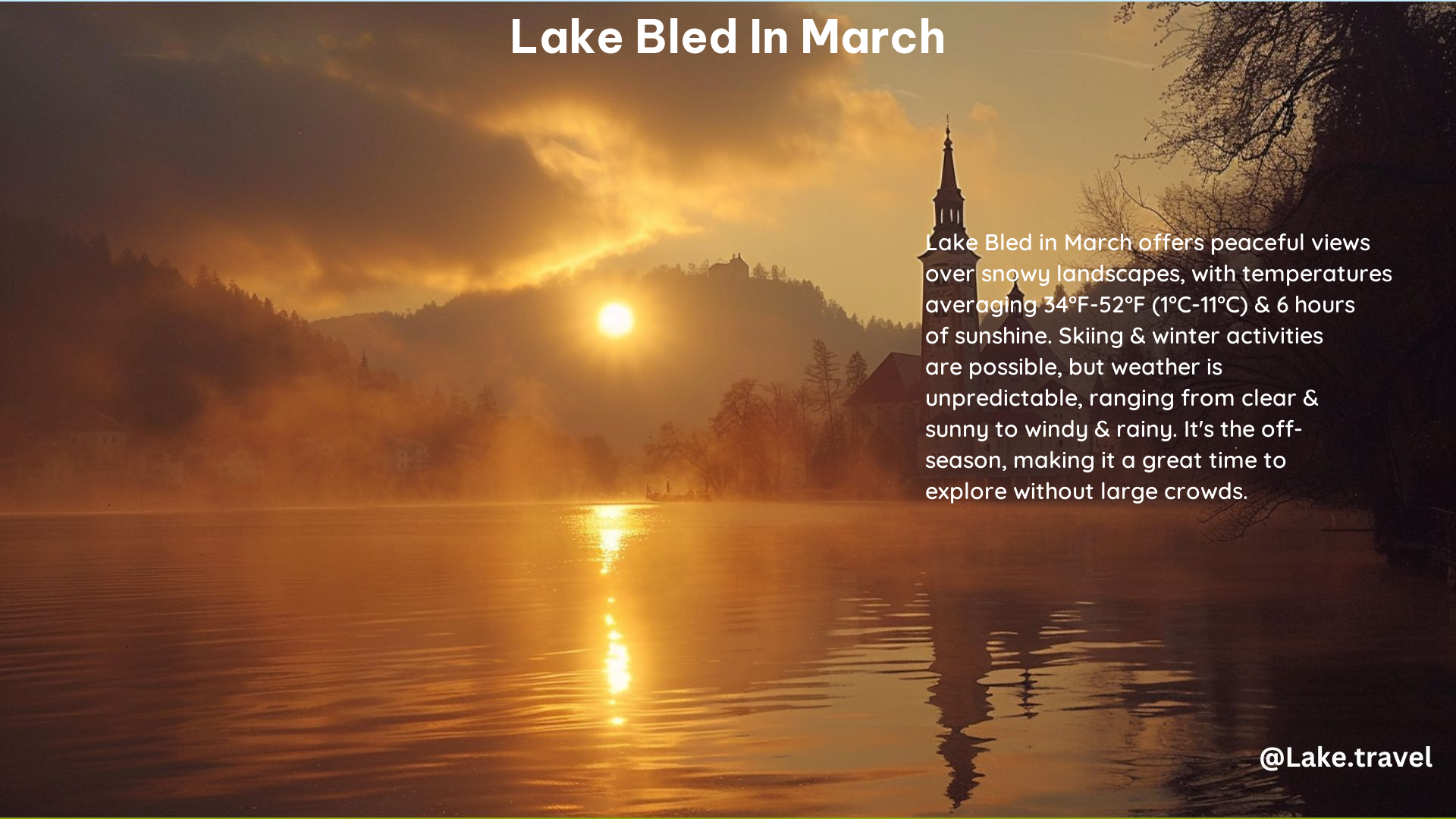Lake Bled in March is a captivating destination that offers a unique and peaceful experience for visitors. While the weather can be unpredictable, with temperatures ranging from 34°F to 52°F (1°C to 11°C) and an average of six hours of sunshine, the area is less crowded, making it an ideal time to explore without the hordes of tourists.
Discovering the Charms of Lake Bled in March
As the winter chill lingers, Lake Bled in March presents a serene and enchanting landscape. The lake’s crystal-clear waters, surrounded by the majestic Julian Alps, create a breathtaking backdrop that is sure to captivate visitors. Despite the cooler temperatures, the area is still a hub of activity, with various outdoor activities and cultural attractions to explore.
Accommodation Options: Luxury and Convenience
When it comes to accommodation, Vila Bled stands out as an excellent choice for those seeking a luxurious and convenient stay. This hotel offers direct access to the lake and a stunning view of Bled Island, making it an ideal base for your Lake Bled adventure. However, it is one of the more expensive options, with rates around 250 euros per night.
Transportation: Exploring the Region
Reaching Lake Bled from Ljubljana is relatively straightforward, with both bus and self-drive options available. The bus takes approximately 1 hour and 20 minutes, making it a convenient choice for a day trip. Alternatively, self-drive offers greater flexibility and the opportunity to explore the surrounding areas at your own pace.
Outdoor Activities and Attractions

Despite the cooler temperatures, Lake Bled in March offers a variety of outdoor activities and attractions for visitors to enjoy.
Bled Island and Pletna Boat Rides
One of the must-do activities in Lake Bled is a visit to Bled Island, which can be accessed by taking a traditional pletna boat. These wooden boats, rowed by skilled oarsmen, provide a unique and picturesque way to reach the island, where visitors can explore the Church of the Assumption and the Bled Castle.
Bled Castle: A Majestic Fortress
Perched atop a steep cliff, Bled Castle offers stunning views of the lake and the surrounding landscape. Visitors can explore the castle’s historic rooms, museums, and enjoy the panoramic vistas from the castle’s terrace.
Hiking in the Julian Alps
For those seeking a more active adventure, the Julian Alps surrounding Lake Bled provide excellent hiking opportunities. While snow may still be present in higher altitudes, such as Kranjska Gora, where daily temperatures average around 37°F (3°C), the lower-elevation trails offer a chance to immerse yourself in the region’s natural beauty.
Culinary Delights and Local Traditions
In addition to the outdoor activities, Lake Bled in March also offers a chance to explore the local culinary scene and cultural traditions.
Traditional Bled Cream Cake
No visit to Lake Bled would be complete without trying the famous Bled Cream Cake, a delectable pastry that has become a symbol of the region. This rich and creamy dessert is a must-try for any visitor.
Exploring Local Cuisine and Traditions
The area surrounding Lake Bled is known for its traditional Slovenian cuisine, which often features locally sourced ingredients and regional specialties. Visitors can explore the local restaurants and cafes to sample the region’s culinary offerings.
Embracing the Tranquility of Lake Bled in March
While the weather may not be ideal for swimming, Lake Bled in March offers a unique and serene experience for visitors. The area is less crowded, allowing for a more peaceful and intimate exploration of the lake and its surrounding attractions. Whether you’re seeking a luxurious stay, outdoor adventures, or a chance to immerse yourself in the local culture, Lake Bled in March is a destination that is sure to leave a lasting impression.
